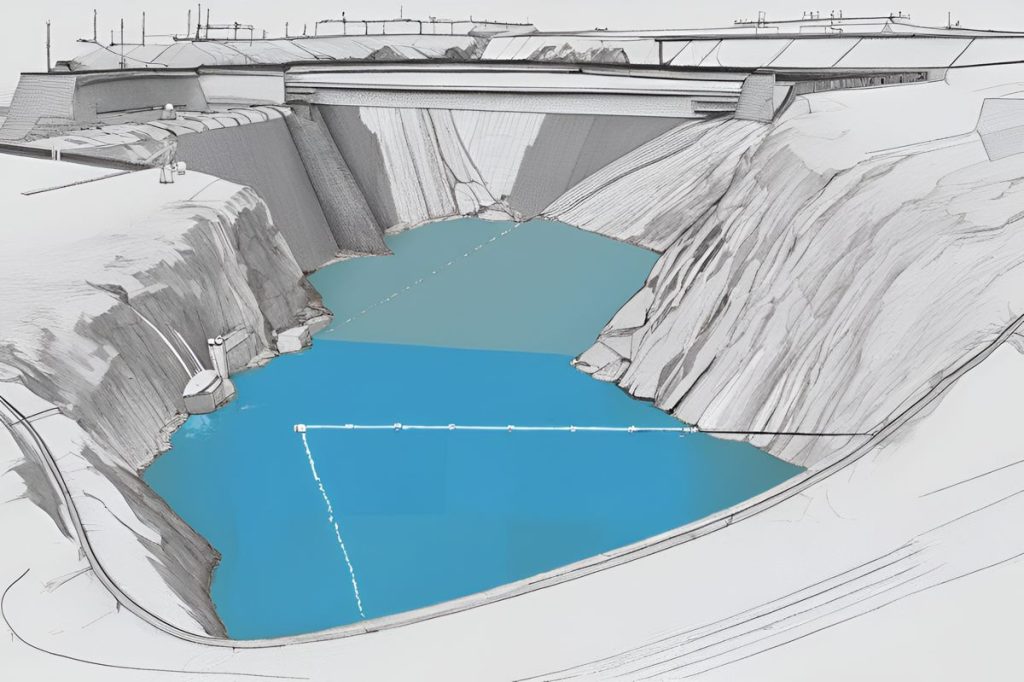Safety concerns have been raised about aging dams on the island like Polemidia, Tamasos, and Xyliatos due to structural issues and proximity to residential areas. The agriculture ministry is currently assessing ten dams for potential risks, emphasizing the critical role these structures play in water management and the economy.
What are the main safety concerns regarding dams on the island?
Recent safety concerns about dams on the island include their age, proximity to residential areas, mechanical problems, and ability to handle emergencies. Aging infrastructure such as the Polemidia dam, structural issues like those at Tamasos and Xyliatos dams, and the risk of landslides at Evretou dam are key issues being addressed.
Assessing the Risks
Recent discussions have cast the spotlight on the integrity of several dams across the island. The agriculture ministry has come forward to assure the public that the situation is under control. An official assessment of ten ageing dams is currently underway by the water development board, sparked by concerns that ranged from their proximity to residential areas to mechanical issues that could potentially lead to catastrophic outcomes.
These structures are not just simple barriers holding water; they are integral to the region’s economy and safety. Those close to urban spaces, such as the Polemidia dam near Limassol and the Tamasos dam near Nicosia, are particularly scrutinized for risk due to their locations. Mechanical problems plague several dams, including Germasogeia, Lefkara, Dipotamos, and Kalavasos, raising alarms about their operational integrity.
Infrastructure and Maintenance
While these issues are being flagged, the agriculture ministry’s permanent secretary has pointed out that regular maintenance is being conducted. This proactive approach is intended to stave off any critical failures that could arise from the reported deficiencies. It is worth noting that the dams play a pivotal role in water management for the island, which is currently more concerned with low water levels than structural failure.
Among the dams under review, the Polemidia dam is of particular concern. Built in 1965, its ageing infrastructure, including worn-out electromechanical equipment, poses a challenge, especially since it lacks the capability of being quickly emptied in an emergency. Accommodations for flood control have also been hampered by unauthorized constructions along the riverbed.
High-Risk Dams
The Tamasos and Xyliatos dams, both serving significant functions for their respective regions, are flagged as high-risk due to structural concerns. The Tamasos dam, built atop unstable clay soil, and the Xyliatos dam, with notable water losses from its walls, demonstrate the challenges faced in maintaining these crucial infrastructures.
Evretou dam, essential for the Chrysochou region, has had its share of troubles with surface landslides after a water level rise. These instances underscore the ongoing need for vigilant monitoring and prompt action to safeguard the surrounding communities.
Economic Implications
The potential failure of the Kouris and Asprokremmos dams, the two largest in Cyprus, would not only be a matter of public safety but could also have severe economic repercussions. However, these two have been deemed to have no significant flaws at present. Kouris dam, the larger of the two with a capacity that constitutes a significant portion of the island’s total water storage, had previously undergone effective waterproofing works.
Asprokremmos dam, built in 1982, stands as the second largest and is a primary water source for Paphos. Its critical role in the water supply chain highlights the necessity of continual investment in dam safety and infrastructure.
As the country addresses these concerns, the importance of dam safety in both rural and urban settings cannot be overstated. The maintenance and upgrading of these structures are vital not only for the present but also for the sustainability and growth of future generations.
What are the main safety concerns regarding dams on the island?
Recent safety concerns about dams on the island include their age, proximity to residential areas, mechanical problems, and ability to handle emergencies. Aging infrastructure such as the Polemidia dam, structural issues like those at Tamasos and Xyliatos dams, and the risk of landslides at Evretou dam are key issues being addressed.
What is being done to assess the risks associated with the dams?
The agriculture ministry, through the water development board, is currently conducting an official assessment of ten aging dams on the island. This evaluation is prompted by concerns about the proximity of dams to residential areas, mechanical issues that could lead to catastrophic outcomes, and overall structural integrity.
Are there any particular dams considered high-risk?
Dams such as Tamasos and Xyliatos are considered high-risk due to structural concerns, with Tamasos dam being built on unstable clay soil and Xyliatos dam experiencing notable water losses from its walls. The Evretou dam has also faced challenges with surface landslides after water level rises, highlighting the need for vigilant monitoring.
What are the economic implications of potential dam failures?
While dams like Kouris and Asprokremmos are not currently deemed to have significant flaws, their potential failure could have severe economic repercussions. Kouris dam, the largest on the island, underwent waterproofing works, and Asprokremmos dam serves as a primary water source for Paphos. Continual investment in dam safety and infrastructure is crucial for safeguarding water supply chains and economic stability.

